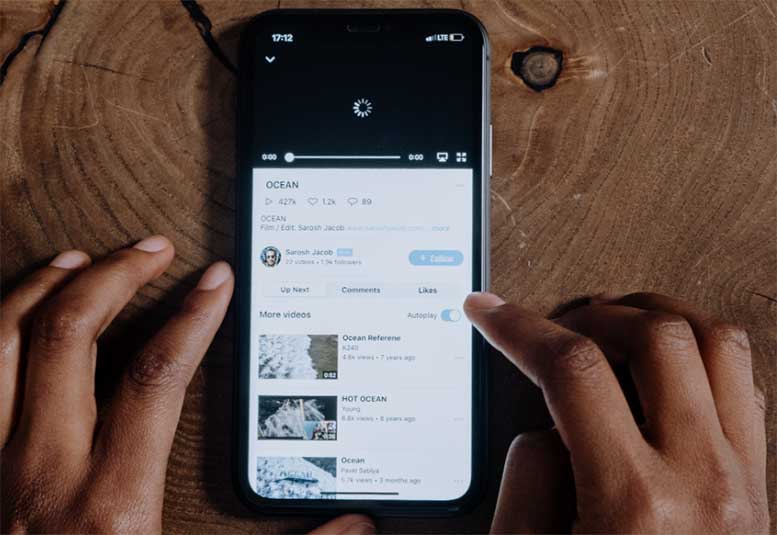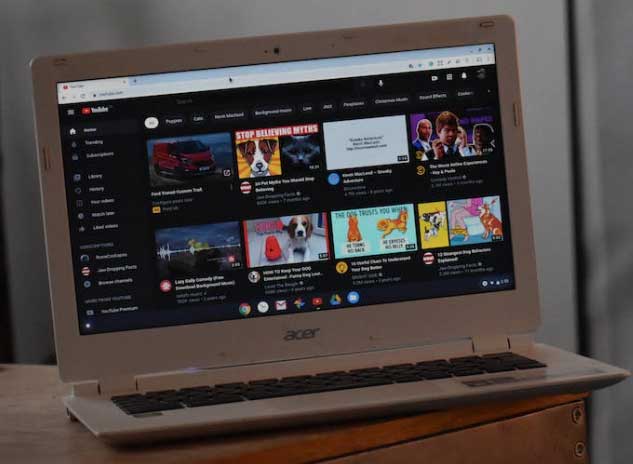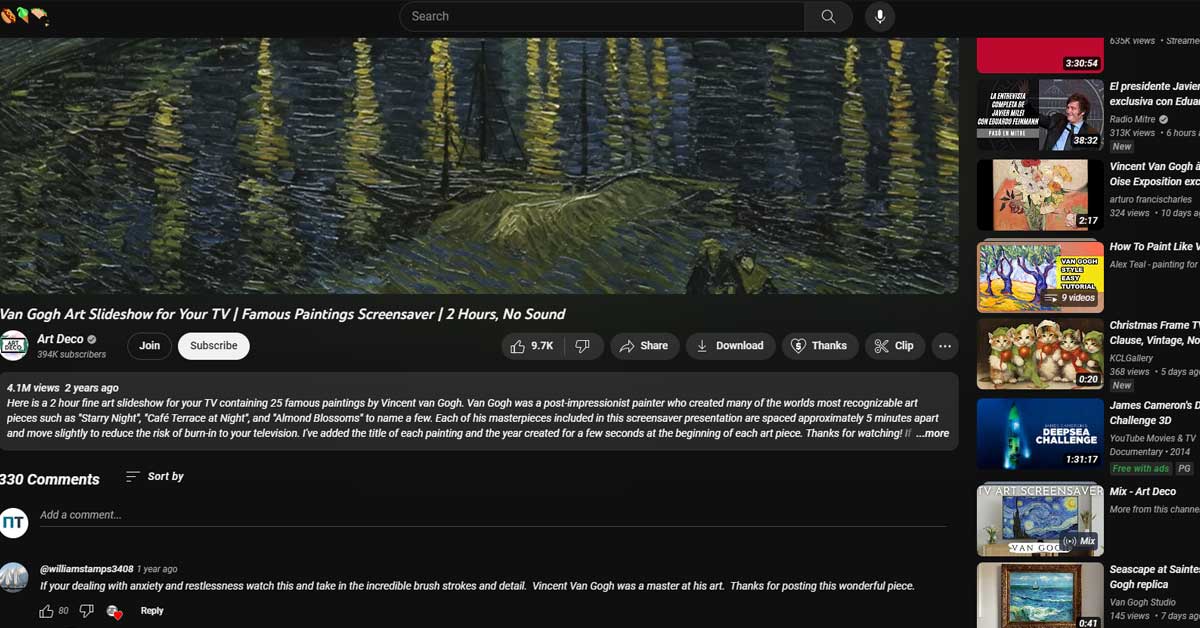Quick Answer: Most likely, YouTube is displaying in italics due to a bug and can be fixed by pressing “Ctrl” + “F5” on your keyboard, which will perform a hard reload.
Have you recently encountered slanted script on YouTube or other Google services? Don’t worry; it’s not just you. From YouTube to Google Calendar, a peculiar issue has been making rounds – text appearing in italics.
This phenomenon has sparked curiosity and, sometimes, mild annoyance among users. But fear not; you’re not alone in this. We’re here to explore the why and how of this italicized mystery, ensuring you’re equipped to return everything back to normal.
The Italic Conundrum on YouTube
You open YouTube, and there it is – italicized text everywhere you look. This isn’t a creative choice by Google but likely a bug. As is the nature of bugs, they tend to show up out of the blue, causing everything from curiosity to concern.
Thankfully, this particular big isn’t the devious kind, so you shouldn’t worry about being in a hurry to fix it other than just to get everything back to normal.
Curiously, this italicization doesn’t apply uniformly. The title of a YouTube video stands tall in regular font, yet the channel name, comments, and view count display slanted.
This selective italicization suggests that the bug is likely rooted in specific CSS (Cascading Style Sheets) properties, which control the appearance of web pages.

Does the Browser You’re Using Make a Difference?
This italic text phenomenon is not exclusive to any one web browser. Whether you’re using Google Chrome, Mozilla Firefox, Safari, or any other browser, you might encounter this issue. It highlights the bug’s nature as being independent of browser-specific features or settings.
Similarly, the bug transcends operating system boundaries. Users across Windows, macOS, and even Linux have reported this quirky behavior.
This universality indicates that the issue is more about how Google services deliver and render content rather than how your device processes it.
Solving the Italic Puzzle
A hard reload is often the first and simplest solution to fix the italicized text on YouTube. But what exactly does a hard reload entail, and why is it effective?
Essentially, a hard reload forces your web browser to ignore all cached data of the page and fetch the newest content directly from the server. This process can be particularly effective in resolving font rendering issues.
Why? Well, remember the Cascading Style Sheets we mentioned a moment ago? Web pages use these to define how elements should be displayed.
Sometimes, due to caching issues, your browser might be holding onto an outdated version of these styles, leading to irregularities like unwanted italics.
Fix #1: Hard Reload
By performing a hard reload, you ensure that your browser re-fetches these CSS files, thereby potentially rectifying any display anomalies.
To perform a hard reload, the process varies slightly depending on your browser:
- In Google Chrome or Mozilla Firefox: Press Ctrl + F5 (Cmd + Shift + R on Mac).
- In Safari: Press Option + Cmd + E to clear the cache, then Cmd + R to reload the page.
That should put things right upon reloading whatever Google service you’re using. However, there are instances where a hard reload might not resolve the issue.
This is where we turn our attention to the font files themselves. Corrupted or outdated local font files can mislead browsers into rendering text incorrectly.
This situation is more common than one might think, as font files can become corrupted due to system updates, software conflicts, or other technical glitches.
In cases where hard reloading is ineffective, reinstalling the font is the next logical step. This ensures that any corrupted or outdated files are replaced with fresh, functional versions.
Fix #2: Reinstalling Roboto
Reinstalling the Roboto font is a straightforward but vital process. Roboto, designed by Google, is the default font for many Google services, including YouTube. Hence, ensuring it’s properly installed is key to a seamless experience. Here’s how you can do it:
1. Download the Font Files:
- Visit Google Fonts.
- Locate Roboto and click on the “Download family” button at the top right corner. This downloads a ZIP file containing various styles of Roboto.
2. Extract the Font Files:
- Once the download is complete, open the ZIP file.
- Extract the contents to a folder. You’ll find different styles of Roboto, each as a separate file.
3. Install the Fonts:
- For Windows users: Right-click on each font file and select “Install.” Do this for each file in the folder.
- For Mac users: Double-click on each font file and click on “Install Font” in the font preview window.
- Ensure you install all styles (Regular, Bold, Italic, etc.) for complete functionality.
4. Restart Your Browser:
- Close and reopen your browser after installing the fonts. This step is crucial as it allows the browser to register the newly installed fonts.
By following these steps, you ensure that your system has the latest, uncorrupted version of the Roboto font. This action can often resolve the issue of italicized text on YouTube and other Google services, bringing back the standard, intended font style.

Exploring Additional Solutions to the Italicized Text Mystery
In the realm of web browsing, browser extensions play a significant role in user experience. In some cases, these extensions can interfere with how websites display content, including text formatting on platforms like YouTube.
An example of this phenomenon can be found with certain privacy-focused extensions, which might inadvertently alter the way text is rendered on the page.
Fix #3: Troubleshooting with Extensions
If you’re encountering italicized text on YouTube, consider examining your browser extensions. Here’s a step-by-step approach:
- Identify Potential Culprits: Look for extensions that might interact with website content, such as ad blockers, privacy tools, or custom theme extensions.
- Disable and Re-enable: Temporarily disable the suspected extension and refresh YouTube. If the text returns to normal, you’ve likely found the source of the issue.
- Check for Persistence: After re-enabling the extension, observe if the issue reoccurs. This can help determine whether the extension is consistently impacting the site’s appearance.
If a particular extension is causing the issue, consider looking for alternative extensions that offer similar functionality without affecting text formatting.
Browser-Specific Variations
It’s also worth noting that this issue might manifest differently across various browsers. Users may find that while one browser shows italicized text on YouTube, another might display text normally. As we posited, this variation suggests that the issue could be linked to how different browsers interact with website code and extensions.
The Interplay of Extensions and Website Code
The interaction between browser extensions and website code is a complex dance. Extensions, especially those focused on privacy and ad-blocking, often modify elements of web pages. This modification can sometimes have unintended consequences on how content is rendered, leading to issues like the italicized text on YouTube.

So, what’s the bottom line here? We know that the italicized text on YouTube is multifaceted and that it can stem from various sources, including browser extensions and their interaction with website code.
By taking a holistic approach – examining browser settings and extensions and considering browser-specific behaviors – users can effectively troubleshoot and resolve these display anomalies. This guide aims to empower you with a comprehensive understanding and actionable steps to ensure an optimal viewing experience on YouTube and beyond.
Preventative Measures and Best Practices
One of the simplest yet most effective ways to ensure optimal font rendering and overall browsing experience is to keep your web browser up to date. Browser developers regularly release updates that not only introduce new features but also fix bugs and rendering issues. Staying updated means you’re less likely to run into problems like the italicized text on YouTube.
Best Practices for Managing Extensions
Browser extensions can significantly enhance your browsing experience but can also sometimes interfere with how websites are displayed. Here are some best practices for managing your extensions:
- Regularly Review Your Extensions: Periodically check your installed extensions and remove those you no longer use.
- Update Extensions Regularly: Just like your browser, ensure your extensions are updated to the latest versions.
- Be Selective: Install extensions from reputable sources and only those that are necessary. The more extensions you have, the higher the chance of running into conflicts.
- Test Extensions for Conflicts: If you notice an issue with a website, try disabling extensions one by one to identify if any are causing the problem.
By understanding the intricacies of font rendering and adopting these preventative measures, you can significantly reduce the likelihood of encountering text display issues and enjoy a smoother browsing experience.

Final Thoughts
As minor a bug as it is, the italicized text issue on YouTube is still a pain. Thankfully, staying informed and proactive about your browser and its extensions can help ensure a seamless online experience. Regular updates, mindful management of extensions, and a keen eye for anomalies can go a long way in keeping your digital journey smooth and hassle-free.
So next time you encounter a curious quirk like italicized text on YouTube, take a deep breath and recall the tips and tricks from this guide. With a little patience and the right approach, you’ll be well-equipped to return your digital world back to its intended state.
Meet Ry, “TechGuru,” a 36-year-old technology enthusiast with a deep passion for tech innovations. With extensive experience, he specializes in gaming hardware and software, and has expertise in gadgets, custom PCs, and audio.
Besides writing about tech and reviewing new products, he enjoys traveling, hiking, and photography. Committed to keeping up with the latest industry trends, he aims to guide readers in making informed tech decisions.

